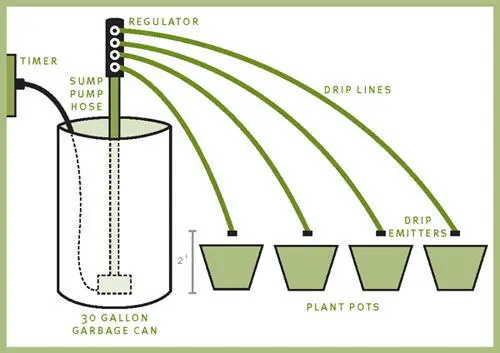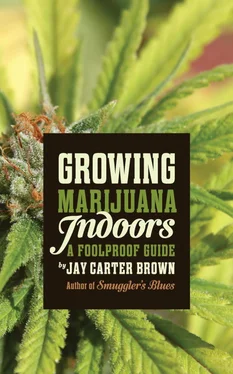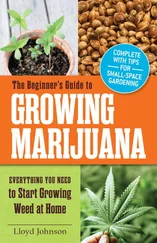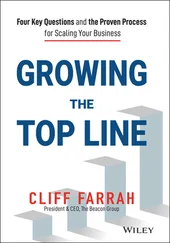Watering techniques are simple for container systems — when the soil dries out to about a third of the way down the container, water them. Usually, you will water your garden on scheduled days once or twice a week, but don’t wait until the plants are too dry. Lift each plant container before watering to determine how much water to give. Since plants use water at different rates, some will need more than others. If the container is light, give it lots of water. Give as much as the plant will take without water running out of the container’s drainage holes and overflowing the tray. Water lightly on the first go round — just enough to wet the soil at the top of the container. Then wait 15 minutes for the soil to expand to the sides of the container. Then water again. This deep watering allows the water to be absorbed into the center of the root ball without uselessly running down the inside of the container and into the tray. In a five-gallon plant pot, I normally water with one half gallon of water on the first round and a second half gallon on the second round. This deep watering method can also be used when fertilizing your plants.
I prefer using a hose, a submersible sump pump, and a wand for watering rather than lifting heavy buckets. The sump pump attaches to one end of your hose and drops into the 30- to 50-gallon watering container in your grow room. The wand attaches to the other end of the hose and is used for reaching faraway plants. I remove any spray heads from the wand using a hacksaw because I want only a soft, smooth flow of water that does not take as long as a spray nozzle does to fill the plant pots. I plug the power cord for the sump pump into a switched extension cord so I can turn the water flow on and off by flipping a switch. I always recommend wearing rubber-soled shoes to avoid any shocks on bare feet when using the power cord. With so much water in the room, some inevitably hits the concrete floor, and water can conduct some electricity into your feet when you switch on the power for the sump pump. Remove the sump pump from the water tank when not in use. Leaving it in the water all the time can ruin the seals. Whenever you use the sump pump to deliver food to the plants, rinse it afterward with fresh water to prevent damage to the seals. Just drop the sump pump in the fresh water and run it for a few seconds until the nutrients are flushed away.
If you notice any of your plants wilting between waterings, just top them up with water and don’t change the watering schedule of your entire garden. Some plants need more water than others, and some are missed on occasion during the watering cycle due to the effects of good reefer and just plain forgetfulness. Usually, the largest and strongest plants need the most water.

I have also used an outdoor watering timer to water my plants. The electronic timer is run by two AA batteries, which means it is not subject to electrical power interruptions. And this means the timer can be trusted to turn on and off over a given cycle if you want to go away on business trips or vacations. It takes a little practice to get the exact water flow rate by adjusting the tap, but after a few tries it becomes easy. The timer is connected to a hose that runs from the water tap to the grow room. Connect the grow room side of the hose to another piece of plastic hose called a manifold. Drip emitters are plugged into the manifold and feed water through ¼ “-thick individual plastic lines that run to each plant pot in the grow room. A visit to any hydroponics shop can provide you with the parts and expertise needed for setting up this type of drip line.
The drip line and timer setup should be used only for pure water, not for delivering hydroponics food to the plants. I recommend hydroponics fertilizers because they are the purest available and will not burn the plants like regular fertilizers, but even hydroponics nutrients will plug up the narrow lines and drip emitters over time. By hand watering and feeding, you can deliver the hydroponics food to just the plants that need it and avoid the ones that don’t. With a hydroponics drip system, all of the plants in the garden receive the same nutrients, even those that should not, such as plants almost ready for harvest or very young transplants. Hand feeding is still best.
A day or two after watering or fertilizing your container plants, use your fingers or a small rake to till the top few inches of soil in the pots. This breaks apart the crust that forms when the soil begins to dry out after watering, allowing the free exchange of air and gases that otherwise become trapped within the soil. The crust also causes a slower evaporation of the water from the soil, which results in a longer drying period between waterings which all translates into slower growth in your plants. While you break up the crust that forms on top of the plant pots, also run your finger around the inside top of the pot where the soil becomes compact. Breaking up this soil closes the gap between soil and container, ensuring that water won’t simply run down the sides.
Overwatering and Underwatering
If you overwater your plants, they will tell you. They will show sluggish growth, and the leaves will begin to turn yellow and then brown and then die. The soil will be constantly soggy. You might also find gnat flies in the soil and on the plants. If you happen to overwater, simply pour off the excess from the plant pot and then hold back on watering until the soil is dry to the touch at least a few inches below the surface. Then water and fertilize as usual on a regular two- or three-week cycle.
Usually, only one plant in the garden will show the first signs of underwatering. Look for a plant that is wilted and hanging listlessly compared to the other robust plants. A well-watered plant is firm and strong, with its leaves and branches held high and plump with water. An underwatered plant will look as though it is sick and dying, its branches drooping and the soil will be dry to the touch several inches down. Learn to anticipate the need for water before the plants wilt. If a plant wilts and is given water right away, say within a 24-hour period, it will recover with no ill effects. If a plant is allowed to stay wilted any longer than 24 hours, it might become sickly and never return to full health.
If you discover insect damage in your garden, buy a magnifying glass to identify which insects are damaging your plants. Once you have determined which pests are infesting your garden you may decide to order predator insects that will eat the offending pests. Although they can keep infestations down to some degree, I have never found predator insects to be effective in totally eradicating pests. As a general principle, check your garden once a week to see if there is any insect damage, searching under the leaves for the rotten little pests. Look for tiny spots or white specks on the leaves where the insects have been sucking the juices out of your plants. Look for any movement on the leaves as tiny insects fly or run away from you. Spider mites will spin webs in your plants if they breed heavily. If that ever happens you must remove the webs by hand before attempting any insect controls or treatments.
There are many insecticides on themarket, but every time you take a chance with a new insecticide you risk killing or setting back your plants. Some insecticides kill pests. Other insecticides kill both pests and plants. When cannabis plants are in flower, there is almost nothing you can do to eradicate insects that won’t hurt your plants. Best to pick the insects off by hand and then let nature take its course. Flowering plants are never far from harvest, and the best treatment for flowering plants with insect infestations is to pull them out of your garden when they are ripe or even a bit earlier and treat only the vegetating plants. Under-ripe marijuana can still be smoked and can provide a worthwhile buzz, although it is neither as sweet nor as potent as a fully developed plant.
Читать дальше













